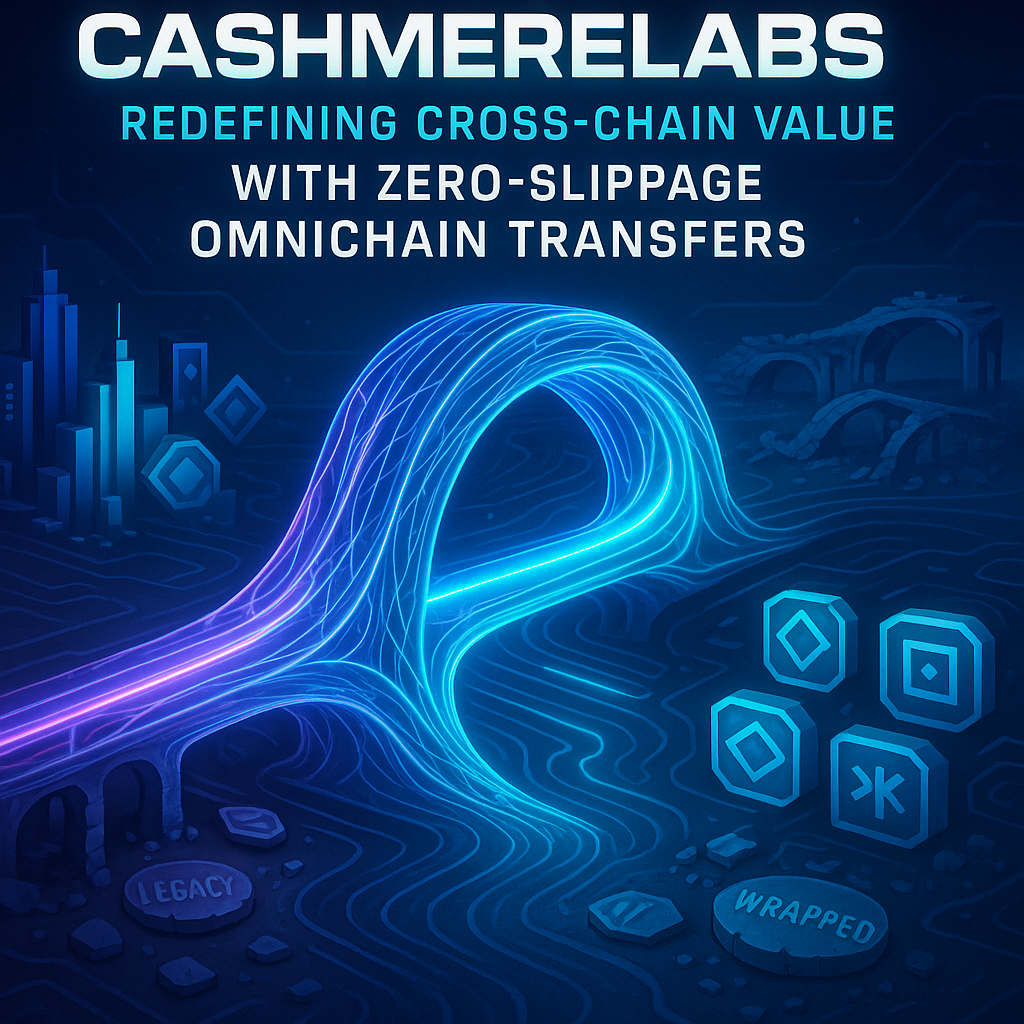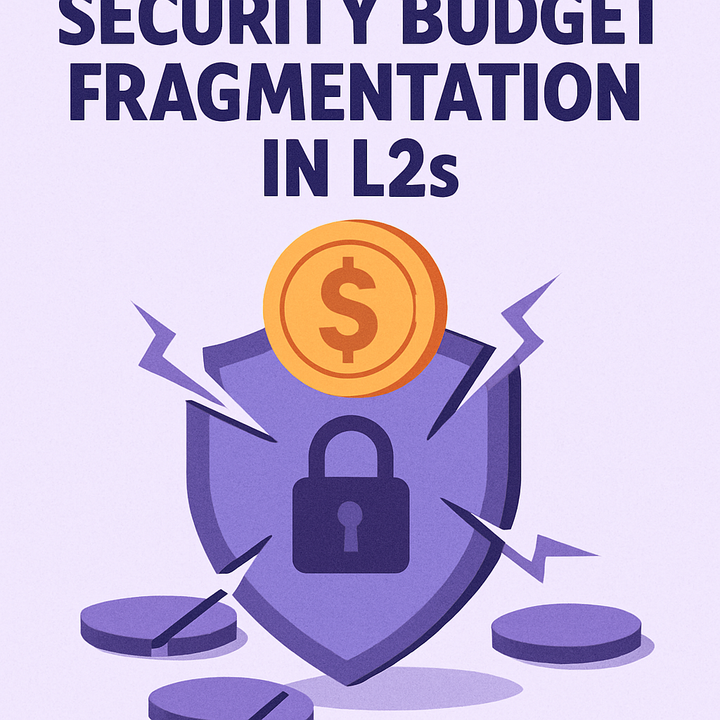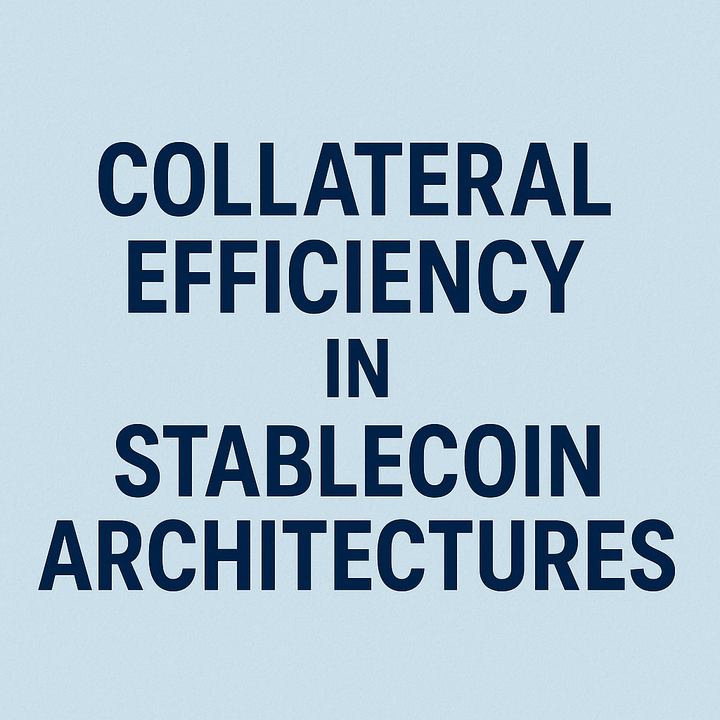CashmereLabs: Redefining Cross-chain Value with Zero-Slippage Omnichain Transfers

Introduction
The blockchain ecosystem has grown into a multichain world—but this growth has also introduced fragmentation, inefficiencies, and user risk. Traditional bridging solutions, ranging from lock-and-mint mechanisms to market-maker-driven routes, are often plagued by slippage, unpredictable fees, and liquidity bottlenecks.
CashmereLabs addresses these issues through a novel omnichain middleware that enables native stablecoin transfers across major blockchains using Circle’s CCTP and Tether’s USDT0. Unlike liquidity-based bridges, Cashmere performs real burn-and-mint transfers, avoiding synthetic assets and reducing execution risk. Its architecture combines a smart contract suite and automated relayers to ensure fast, cost-efficient, and slippage-free cross-chain value movement.
Breaking the Efficiency Barrier: Lower Fees, Faster Finality
Unlike legacy bridges that rely on pre-funded liquidity pools and synthetic assets, Cashmere’s design transforms cross-chain capital movement into a streamlined, native-to-native transaction with significantly reduced gas usage.
In another word: Old-school bridges" need to keep a pile of money locked up on each chain to move your funds between them. They often give you a copy (or ‘wrapped’ version) of your token, not the real thing.
Cashmere works differently. Instead of using copies or holding extra funds on each chain, it directly destroys your token on one chain and creates the real version of it on the other. This makes things faster, cheaper, and safer.
For example:
| Source Chain | Gas Cost | Average Finality Time |
|---|---|---|
| Sui | ~$0.018 | A few seconds |
| Aptos | ~$0.002 | A few seconds |
| Cosmos | ~$0.002 | A few seconds |
| Monad | ~$0.004 | A few seconds |
| Avalanche | ~$0.004 | A few seconds |
| Ethereum L1 | ~$0.35 | ~20 seconds |
| Ethereum L2s | ~$0.003 | ~8 seconds |
| Solana | ~$0.008 | A few seconds |
This performance is enabled by a 45% reduction in gas consumption compared to alternatives like Stargate, which consumes 270K–300K gas for Ethereum transfers. Moreover, Stargate’s $30–50 million annual liquidity incentive burden is eliminated in Cashmere’s design, where no capital is locked in pools.
Architecture: On-Chain Contracts + Off-Chain Relayers
Cashmere operates through two core components:
1. On-Chain Contracts
Implemented across EVM and non-EVM chains (Solidity, Move, TypeScript), these contracts:
- Burn tokens (e.g.,
TokenMessenger) - Emit cryptographically verifiable messages (
MessageTransmitter) - Mint tokens on the destination chain (e.g.,
UsdtDFT,UsdtOFT)
The CashmereCCTP contract for EVM chains unifies token burning, message handling, attestation verification, and downstream function calls.
2. Off-Chain Relayer
A Dockerized, multi-threaded Go service that:
- Listens for burn events
- Fetches attestations (e.g., from Circle)
- Executes token minting on the destination chain
- Incorporates fault tolerance and gas optimization logic.
Real-Time Relayer Fee Quoting
Cashmere offers a fee quoting system through a REST API, enabling real-time fee calculation:
GET /quote?dstChainId=42161&amount=1_000_000
Returns:
jsonCopyEdit{
"feeAmount": "3450000000000000",
"expiresAt": 1715920000,
"signature": "0xabc123..."
}
This quote is signed off-chain and verified on-chain via ECDSA.recover() or chain-specific methods, ensuring predictable gas pricing and tamper-resistance.
Guaranteed Outcomes: No Slippage, No Surprises
Cashmere enforces a minimum received amount on every transfer:
iniCopyEditminAmountOut = depositAmount - relayerFee - protocolFee
This guarantees users always receive a predictable amount of funds, free from market-maker spreads, AMM volatility, or MEV exploitation.
Relayer Incentives and Economic Model
Relayers in the Cashmere ecosystem are economically incentivized through two mechanisms:
- Direct relayer fees, quoted in real time and paid in stablecoins.
- Optional protocol-level incentives—planned in upcoming versions—for uptime guarantees and efficient routing.
This model ensures reliability while preventing overpayment and inefficiencies often seen in static reward systems.
Composability for the Omnichain Future
Cashmere isn't just a bridge—it's middleware infrastructure for building omnichain dApps. The system is fully composable with:
- Yield aggregation platforms.
- Cross-chain vaults.
- On-chain payments and token swaps.
- AI agents interacting natively across chains.
For instance, relayers can route funds directly into a DeFi vault or settle a DAO payment in real time across different chains—expanding Cashmere’s utility far beyond asset transfers.
Messaging Standards: Cashmere vs. OFT, GMP, Wormhole
Cashmere takes a unique path among interoperability solutions:
- LayerZero OFT, Axelar GMP, and Wormhole focus on cross-chain contract calls and general message passing.
- Cashmere prioritizes native stablecoin transfer with execution guarantees, which is ideal for use cases requiring deterministic capital movement.
This positions Cashmere as complementary to generalized message frameworks, while being more reliable for payments, swaps, and vault strategies.
Empirical Performance: Better Outputs, Always
A benchmark transfer of 124,089 USDC from Solana to Ethereum illustrates Cashmere’s superiority:
- Relay delivered: 123,855 USDC (234 USDC loss).
- Cashmere delivered: 124,066 USDC (only 23 USDC loss).
This 90% reduction in slippage is the result of zero market-maker spreads and no reliance on price-sensitive liquidity routes.
Figures from the Cashmere whitepaper show:
- A 25% relative surplus in value over three years.
- 7.7% annualized output gains during high gas volatility.
Known Limitations and Future Roadmap
Cashmere currently supports major ecosystems like Ethereum (L1/L2), Solana, Sui, Aptos, Cosmos, and Monad. Expanding to ecosystems like zkSync, Polkadot, and Near is on the roadmap.
Additionally:
- Relayers are semi-trusted, though decentralization via staking or committee models is planned for Q4.
- Governance remains multisig-based, with progressive decentralization and a potential native token on the horizon to incentivize long-term alignment.
Known Limitations and Future Roadmap
Cashmere currently supports major ecosystems like Ethereum (L1/L2), Solana, Sui, Aptos, Cosmos, and Monad. Expanding to ecosystems like zkSync, Polkadot, and Near is on the roadmap.
Additionally:
- Relayers are semi-trusted, though decentralization via staking or committee models is planned for Q4.
- Governance remains multisig-based, with progressive decentralization and a potential native token on the horizon to incentivize long-term alignment.
Conclusion: A New Standard for Interoperability
CashmereLabs represents a paradigm shift in cross-chain value transfer. By eliminating slippage, reducing fees, and avoiding reliance on market-makers or synthetic tokens, Cashmere provides unmatched security, efficiency, and user experience.
With its robust relayer system, developer-friendly tooling, and composability across EVM and non-EVM chains, Cashmere is not just another bridge—it’s the omnichain execution layer the Web3 ecosystem has been waiting for.
As omnichain applications, payments, and AI agents proliferate, CashmereLabs is poised to become a foundational layer of trust, speed, and cost-efficiency across the blockchain universe.
References
Similar Articles
zk‑SNARKs to zk‑STARKs: The Evolution of Zero‑Knowledge in Web3
Succinct SP1 zkVM: Democratizing Zero-Knowledge Proofs for Rust Developers
🧬 How Replacing the EVM with RISC-V Could Accelerate Mitosis’ Programmable Liquidity Vision
The Future of Web3 Security: Verifiability Without Visibility Using zkTLS and FHE
Unpacking Blockchain's Engines: A Comprehensive Look at Virtual Machines


Comments ()